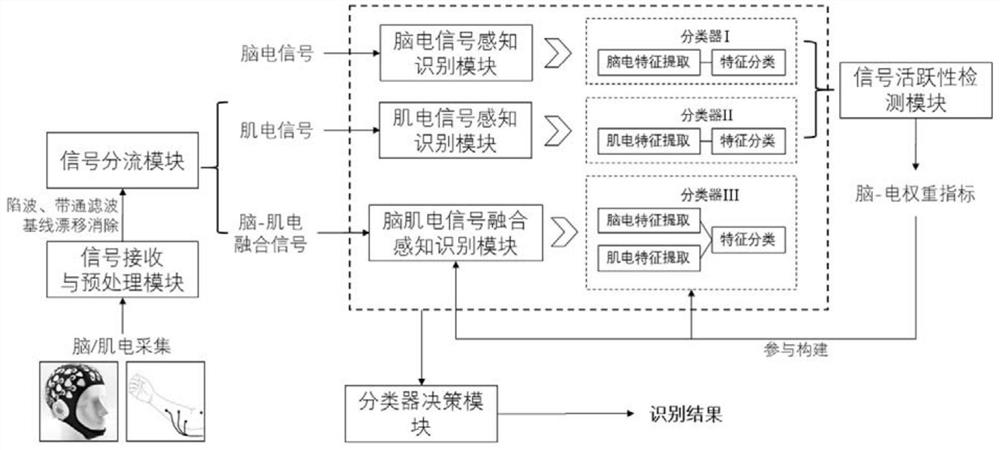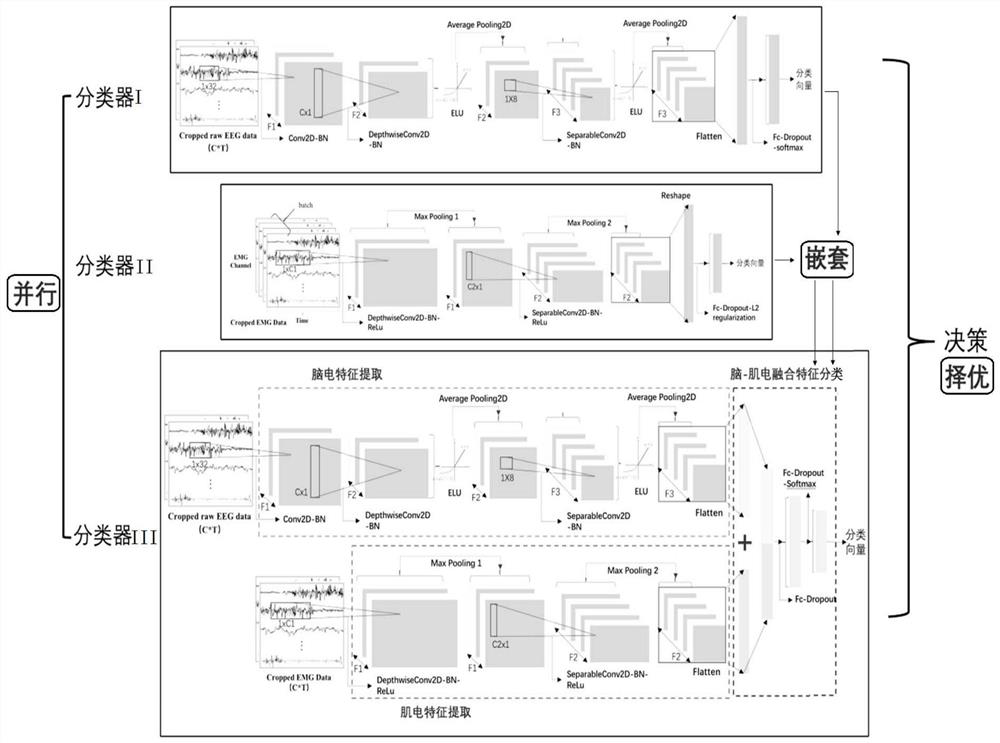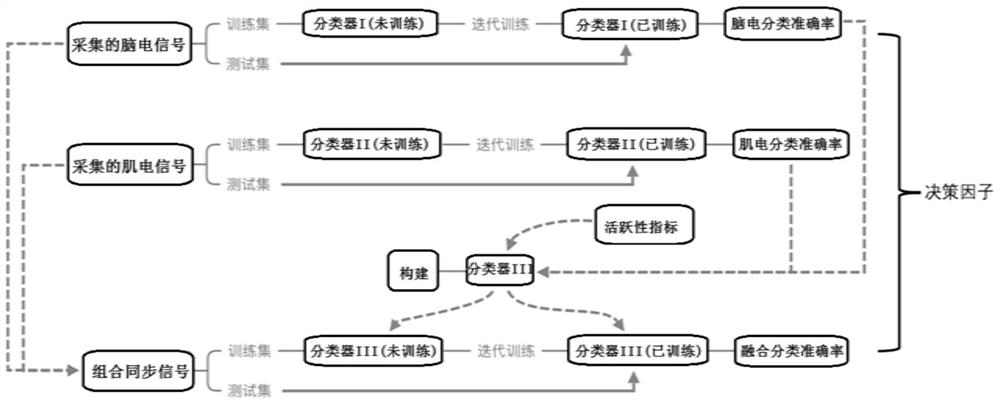Parallel nesting and autonomous preferential classifier for intelligent artificial limb brain-myoelectricity fusion perception
A classifier and myoelectric technology, applied in the field of brain-computer interface technology and artificial intelligence, can solve problems such as perception strategies and rehabilitation intelligence
- Summary
- Abstract
- Description
- Claims
- Application Information
AI Technical Summary
Problems solved by technology
Method used
Image
Examples
Embodiment Construction
[0050] The present invention will be further described in detail below in conjunction with the accompanying drawings and embodiments. The embodiments are only for explaining the technical concept and characteristics of the present invention, and do not limit the protection scope of the present invention.
[0051] (1) Parallel nesting and autonomous optimal classifier for intelligent prosthetic brain-myoelectric fusion perception
[0052] The parallel nesting and autonomous optimal classifier of the present invention is suitable for system equipment (for example, rehabilitation prosthetics) with time span adaptability requirements, so that the classifier can realize the adaptive classification of feature changes in the rehabilitation process through brain myoelectric fusion core advantages.
[0053] see figure 1 , the parallel nesting and autonomous optimal classifier of the present invention mainly includes a signal receiving and preprocessing module, a signal shunting modul...
PUM
 Login to View More
Login to View More Abstract
Description
Claims
Application Information
 Login to View More
Login to View More - R&D
- Intellectual Property
- Life Sciences
- Materials
- Tech Scout
- Unparalleled Data Quality
- Higher Quality Content
- 60% Fewer Hallucinations
Browse by: Latest US Patents, China's latest patents, Technical Efficacy Thesaurus, Application Domain, Technology Topic, Popular Technical Reports.
© 2025 PatSnap. All rights reserved.Legal|Privacy policy|Modern Slavery Act Transparency Statement|Sitemap|About US| Contact US: help@patsnap.com



